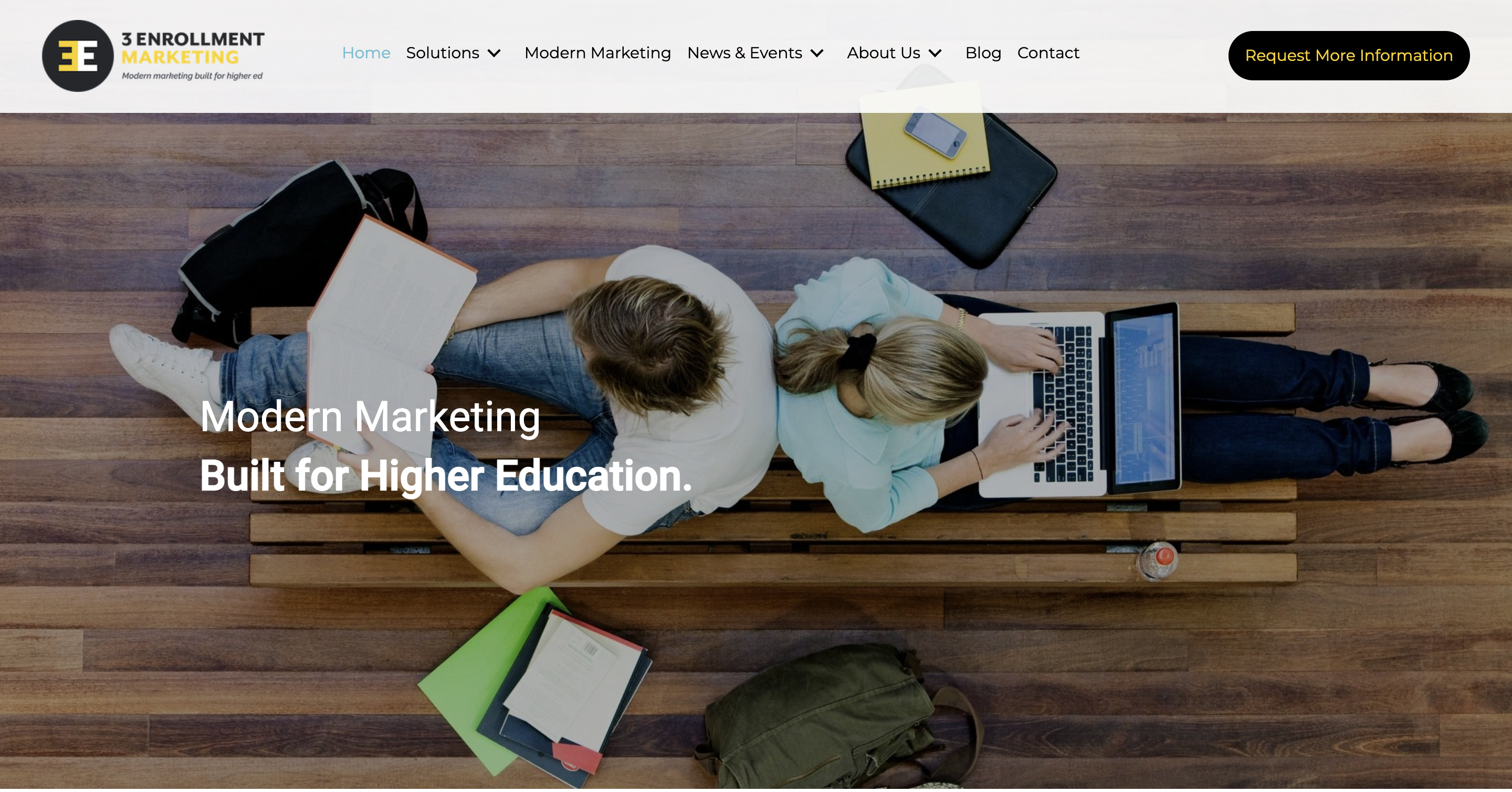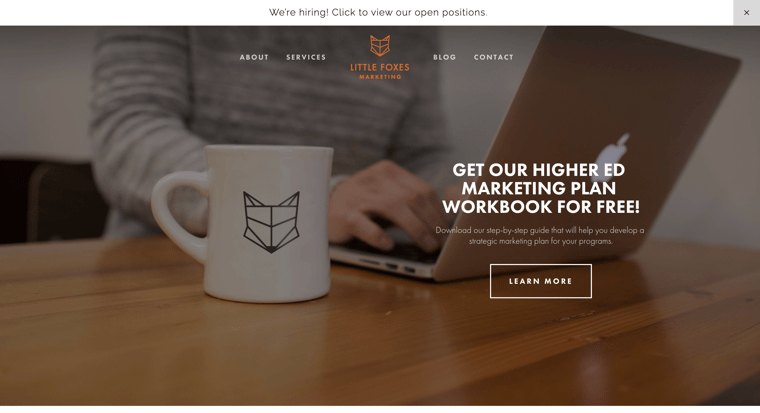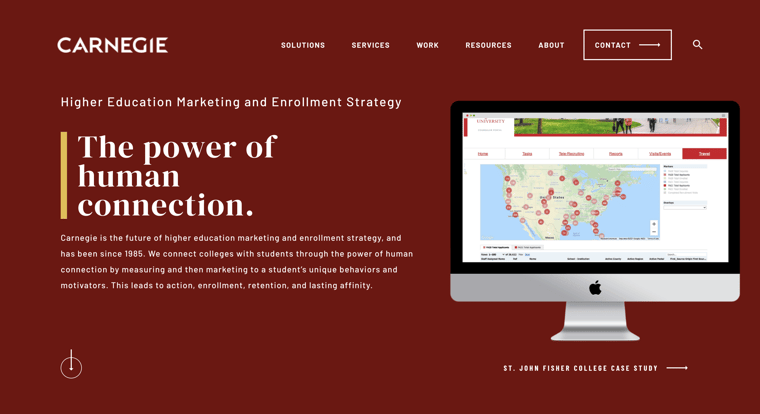4 Signs your University Needs a Higher Education Marketing Agency
“Success,” quipped Don Draper, “comes from standing out, not fitting in.” If your university’s website or online presence isn’t outstanding it could be costing you enrollments. Stellar web design and user experience are table stakes for today’s digital-native prospective students searching for a university.
There are a lot of reasons not to hire an outside agency, for example, you might have internal resources or not want to spend the money. And although agencies are expensive they’re also worth the money when it comes to things like website redesigns or branding decisions. An agency provides an objective third-party opinion based on years of professional experience and avoids projects getting bogged down by internal politics, or worse, killed altogether.
Most universities would benefit from hiring an outside agency for marketing and advertising projects, but every so often we find universities who need to hire an agency...like yesterday. If your higher education institution is the latter, you might not know it. Here are a few signs it’s long overdue.
1. Inconsistent Branding.
With a market cap of almost $3T, Apple is the world’s most valuable company. It’s no coincidence that it’s also one of the most recognizable brands in the world. If you think about the experience of buying products from Apple, there’s a consistency to each and every step of the customer journey. The website, typography, copy, images, packaging, and more provide a cohesive experience that reinforces the value of Apple products.
Big brands like Apple start small with brand guidelines, a set of rules for creating branded assets like a website, landing pages, postcards, or even a course catalog. Even the largest brands in the world will oftentimes partner with advertising or branding agencies to create brand guidelines.
Boston University Brand Guidelines
While it may seem trivial to spend marketing budget on brand guidelines it will pay dividends in the long run in getting everyone on the same page across departments, agencies, and partners.
2. Declining website traffic.
No matter how many campuses you visit, booths you set up, or virtual career fairs you Zoom into—if no one visits your website then you’re not going to enroll new students. At the end of the day, the quantity of website visitors and the rate at which they convert into new students will ultimately determine your success as an enrollment manager.
For most universities, the number of website visitors increases over time as more and more students become familiar with the institution and its presence grows. Enrollment really is a zero-sum game, especially for regional or specialized universities. If your website traffic is on the decline, then it might be time to invest in a paid advertising agency or an SEO agency that can help boost traffic. If you’re unsure how your website traffic is trending, especially on key admissions pages, then it’s time to find out.
Ask for access to website analytics. If you get puzzled looks at this request, then it’s time to set up Google Analytics for your website and to start measuring traffic. Once you have a benchmark for how many visitors your website receives on an average month, day, week and their conversion rate you’ll be prepared to start looking for agencies to help increase your efforts.
3. Not showing up in Google Search.
When was the last time you audited your university’s presence in search results? While it may sound like just another to-do, understanding when, where, and how your website appears in search results can change the trajectory of your enrollment efforts.
Even a small mistake, like failing to remove a “no-index” tag on your homepage or failing to fix a broken link in your navigation can have a seismic impact on whether or not searchers are able to find your website on the internet.
SEO agencies don’t just spot errors on your website, they can also help you structure your existing web pages and plan future content in order for it to appear more often and in high-traffic search results.
One missed opportunity for the majority of universities is keyword research. SEOs use keyword databases like AHREFs and SEMrush to see the volume of internet searches for a particular word or phrase.
For example, they could look at the most searched for programs at your university and help you prioritize information that prospective students are looking for. They could also help you understand what questions users have around admissions and help structure the flow of information on your admissions pages to answer these questions and show up in more search results.
4. Website traffic isn't converting.
How do you know if your website traffic is converting? The first step is to correctly measure your conversion rate. In order to do that you have to first have website analytics configured as well as goals. If all of these tools and tactics are making your head spin, then it might be time to hire a conversion rate expert.
Conversion Rate Optimization, or CRO, is a newer marketing discipline than advertising or PPC, but it can drastically change how you think about driving enrollments on your website.
Unlike paid advertising, CRO uses your existing website traffic to run tests on different versions of a landing page or form. When done correctly, many universities see 3-5x increases in enrollments within a few weeks without increasing marketing budgets. Of course, HALDA is a CRO tool designed to help universities make the most of their marketing budgets. But, if you don’t use our industry-leading CRO experts, here are a few additional agencies we know, like and trust.
Best Digital Agencies for Higher Education

Founded: 2019
Located: Oneonta, NY

Founded: 2018
Located: Camp Hill, PA

Founded: 1985
Located: Westford, Massachusetts

